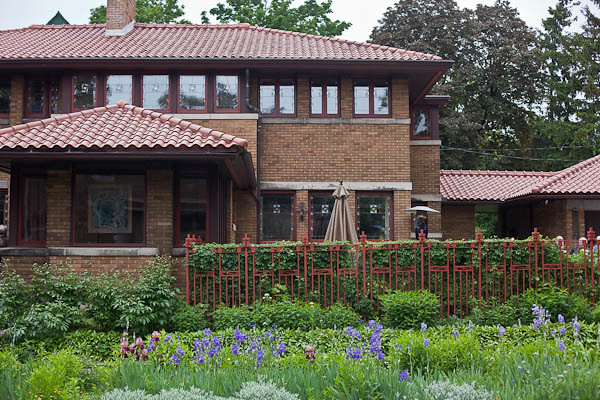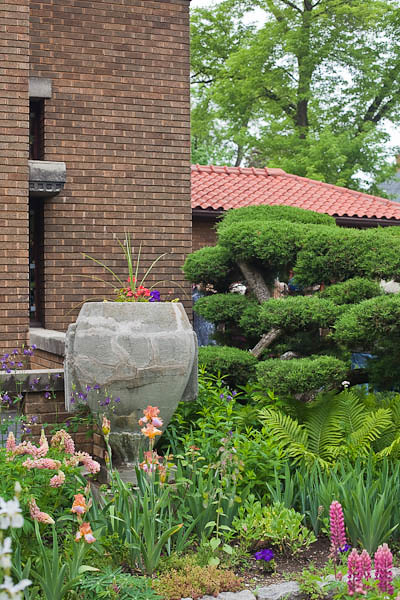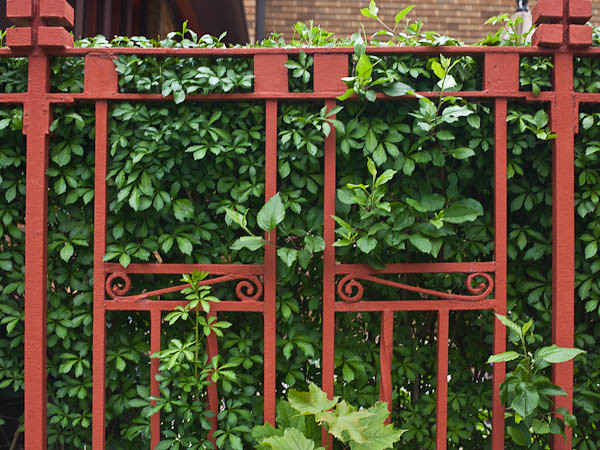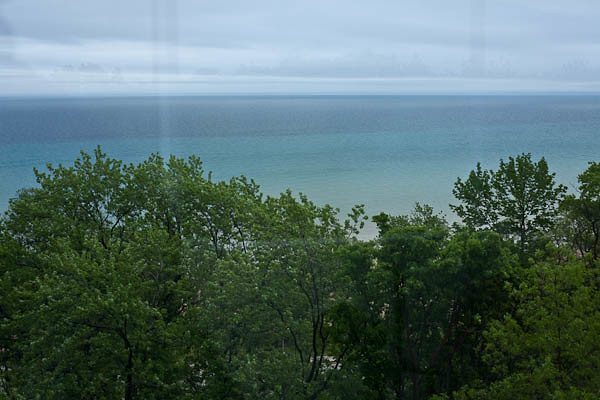One of the homes featured on the Wright & Like Tour 2011 in Milwaukee was the Dr. T. Robinson & Emma Bours House designed by once Wright associate Russell Barr Williamson. The home was constructed in 1921-22 and is Williamson’s best example of the classic Prairie-style architecture. The home has been carefully preserved and maintained, and remains true to Williamson’s design except for the two enclosed porches and bathrooms and kitchen remodeling projects.
Some of its more notable Prairie style features are the low-pitched terra-cotta roof, the strong horizontal lines and overhanging eaves. Further decorative details include long horizontal brickwork, the brick pilasters, cast planters, and stained glass windows set on concrete lintels.
The garden, designed and carefully tended by the current owners, complements the exterior of the home. The pink poppies and pink/yellow lupine contrasted beautifully with blue and purple iris. What a fantastic display of color!
The garden is partially surrounded by this handsome red wrought iron fence, designed by Williamson, but so much like the wrought iron work Wright often designed. Even the color — Cherokee red — is a Wright favorite.
Williamson worked with Wright from 1912-1918 and managed his Chicago office. When Wright was in Japan, Williamson supervised the construction and completion of many of Wright’s buildings in the Milwaukee area.
Classic Prairie-style. A handsome house, inside and out.
—————–
Bo Mackison is a photographer and the owner of Seeded Earth Studio LLC. She is known for her botanical photography, but Prairie-style architecture is another of her favorite subjects.















